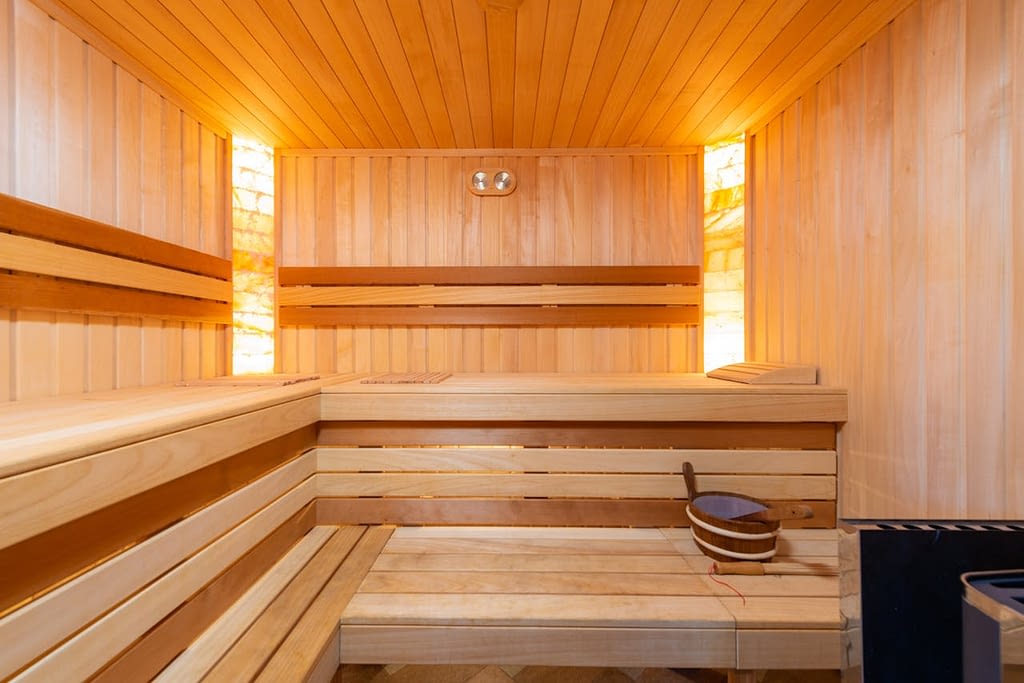What is the difference between Infrared and Traditional Sauna?
Saunas have long been celebrated for their relaxing warmth and health benefits. Whether in a plush spa or a home wellness area, the soothing heat of a sauna can be a true escape. However, not all saunas are created equal. In this post, we’ll delve into the key differences between infrared and traditional saunas, exploring how each functions and which might be the best choice for your health and wellness goals.
What is a Traditional Sauna?

Traditional saunas, also known as Finnish saunas, are probably what most of us are more familiar with. These consist of a wood-lined room heated by a stove, which may be powered by wood, gas, or electricity. The stove heats rocks, which in turn radiate heat throughout the room, increasing the room’s temperature to anywhere between 150°F (65°C)and 195°F (90°C). Users often pour water over the heated rocks to create steam, increasing humidity and intensifying the heat sensation.
What is an Infrared Sauna?

Infrared saunas, on the other hand, use infrared heaters to emit infrared light, which is experienced as radiant heat and absorbed directly by the skin. Unlike traditional saunas, infrared saunas don’t heat the air around you. Instead, they use a specific spectrum of light to penetrate human tissue, heating the body before the air, which allows temperatures to remain much cooler, generally between 120°F (48°C) and 140°F (60°C).
Uses of Sauna
The intense heat of traditional saunas makes them excellent for thorough sweating. They are often used for detoxification, relaxation, and soothing sore muscles. Saunas are an integral part of culture in Finland and other parts of Scandinavia, where sauna use is a social activity and a part of daily life.
Infrared saunas are perfect for those who prefer a less intense heat or who are sensitive to high temperatures. They are favoured for pain relief, muscle recovery, and deep tissue relaxation. The direct heat penetration makes infrared saunas popular among those seeking targeted health benefits, including improved circulation and skin rejuvenation.
Infrared Vs. Traditional Sauna Health Benefits
A traditional sauna can significantly boost cardiovascular performance, aid recovery after intense physical activity, relieve stress, and improve overall health. The high temperatures can also stimulate blood flow, ease pain from conditions such as arthritis, and reduce the risk of cardiovascular diseases.

Infrared saunas provide deeper tissue penetration, enhancing detoxification processes more efficiently than traditional saunas. They have been associated with aiding weight loss, reducing inflammation, improving skin conditions, and lowering blood pressure. The gentler heat is also more accessible for those who might find traditional sauna temperatures too challenging.
Considerations
Both sauna types are considered safe for most users, but personal health conditions like heart problems or respiratory issues should be considered when choosing a sauna. Infrared saunas are generally more accessible because of their lower temperatures and the direct nature of their heat.
Installing a traditional sauna can be more expensive due to the costs associated with its construction and energy requirements. Infrared saunas are more cost-effective and easier to install, often requiring no more than a standard electrical outlet. There are many cost-effective options for infrared saunas at home. Try an Infrared Sauna Blanket or an easy-to-assemble Sauna Pod. Both are great options for getting the benefits at home.
Choosing between a traditional and an infrared sauna should ultimately depend on your health needs and preferences. Consider why you want to use a sauna. Is it for general wellness, or do you have specific health issues that might benefit from infrared therapy?
Think about how a sauna fits into your lifestyle. If you enjoy social sauna sessions or prefer a steamy, intense heat, a traditional sauna might suit you. If you prioritize convenience and are looking for a sauna to use as part of a daily health regime, an infrared sauna might be the better choice.
Summary
Both traditional and infrared saunas offer significant health benefits. Choosing between them depends mainly on personal preference and specific health goals.
You will probably find a traditional sauna in most gyms, hotels, or spas. Even though infrared saunas have become popular in recent years, they are generally harder to come by. I enjoy both, but I find having an infrared sauna at home a great option. To enable you to detoxify and help with aches and pains as and when i need it. It is lovely to go to a spa and enjoy a traditional sauna with friends, but I can’t always withstand the heat for too long. I encourage you to try both types to experience the differences and identify the best fit for your lifestyle. Needless to say the health benefits are clear so you can’t go wrong.







